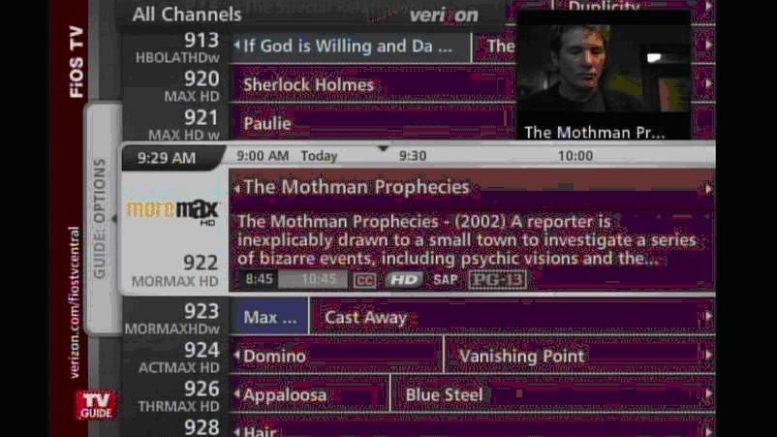One of the major advantages of satellite TV is that when you want your local stations, they’re all where you expect them to be… channel numbers below 99. In fact, all HD channels share numbers with their SD counterparts, which is rare among cable and satellite providers. How is it that DIRECTV can do what Verizon and Comcast can’t?
The answer is that DIRECTV has to do it that way, while Verizon doesn’t have to.
Local cable companies use local headend systems. In other words, somewhere in your city or town is a building with a lot of satellite dishes and a big fat wire. They pull in all the programs from the satellite and organize them so each channel has a spot on the cable. This is called modulation. Every channel has to have one spot and no two channels can share the same spot. Since the standard definition channels already use 2,4,5, and the like, the HD versions are often shoved up to channel 502, 1002, or whatever. Also, because SD channels take up less space on the wire, it’s hard to mix SD and HD channels. So it’s not like channel 2 could be SD and channel 3 HD without a lot more work.
On the other hand. DIRECTV has close to 5,000 channels of content. Of course you can’t get all of them, because most of them are local channels for each of the markets served by DIRECTV. Others are what are referred to as “backhaul” channels, meaning that they are used internally by DIRECTV and the public never sees them.
DIRECTV’s systems have to be flexible, because the channels you watch sometimes move from satellite to satellite. Today, you may be watching CBS from satellite DIRECTV11, transponder 4, channel 3, while tomorrow that same station could be on DIRECTV12, transponder 22, channel 1. DIRECTV wouldn’t have a lot of success if they required you to change your viewing habits every time they moved a channel.
Not only that, but if every channel number in a DIRECTV system were unique, there could be only one channel 2 (for example.) If you weren’t in the city with channel 2, your local stations could be channel 9045, 9046, and 9047. That’s not very user friendly!
DIRECTV developed a system like shortcuts on your desktop. It’s very flexible, and they can make any channel appear with any number they want. They use it with national channels so that your SD and HD channels have the same number. They also use it so that each of the roughly 180 local markets can have channels in the 2-99 range. Much more friendly, and part of DIRECTV’s success.
Verizon, Comcast, and that crowd could do much the same thing but it would make the millions of cable boxes out there obsolete, leading to huge replacement costs. DIRECTV started using its system around 2001, and has been supporting the older system (without channel aliases) until very recently, but since DIRECTV added so much HD people needed new boxes anyway.
At some point, probably within the next ten years, cable companies will start to phase out SD channels, meaning that they’ll have the option to put those HD channels where they belong.

